-
 Bitcoin
Bitcoin $108,262.4325
-1.40% -
 Ethereum
Ethereum $2,518.2882
-2.94% -
 Tether USDt
Tether USDt $1.0003
-0.01% -
 XRP
XRP $2.2262
-1.71% -
 BNB
BNB $653.9254
-1.55% -
 Solana
Solana $148.1036
-3.11% -
 USDC
USDC $1.0000
0.01% -
 TRON
TRON $0.2829
-1.45% -
 Dogecoin
Dogecoin $0.1639
-4.82% -
 Cardano
Cardano $0.5742
-4.43% -
 Hyperliquid
Hyperliquid $38.9506
-3.95% -
 Sui
Sui $2.9040
-4.34% -
 Bitcoin Cash
Bitcoin Cash $484.8307
-2.62% -
 Chainlink
Chainlink $13.1971
-3.73% -
 UNUS SED LEO
UNUS SED LEO $9.0822
0.51% -
 Avalanche
Avalanche $17.8613
-4.01% -
 Stellar
Stellar $0.2385
-2.26% -
 Toncoin
Toncoin $2.7570
-3.88% -
 Shiba Inu
Shiba Inu $0.0...01145
-3.99% -
 Litecoin
Litecoin $86.9999
-2.43% -
 Hedera
Hedera $0.1538
-3.90% -
 Monero
Monero $313.7554
-2.03% -
 Polkadot
Polkadot $3.3681
-5.08% -
 Dai
Dai $1.0000
0.00% -
 Ethena USDe
Ethena USDe $1.0001
-0.01% -
 Bitget Token
Bitget Token $4.4401
-2.97% -
 Uniswap
Uniswap $6.9644
-8.41% -
 Pepe
Pepe $0.0...09666
-4.79% -
 Aave
Aave $266.5686
-5.04% -
 Pi
Pi $0.4713
-4.95%
How to calculate Gate.io transaction fees? How to save money when buying and selling
To save on Gate.io fees, hold GT, increase trading volume, use limit orders, and participate in promotions; always check your fee tier and use the referral program.
May 01, 2025 at 08:13 am
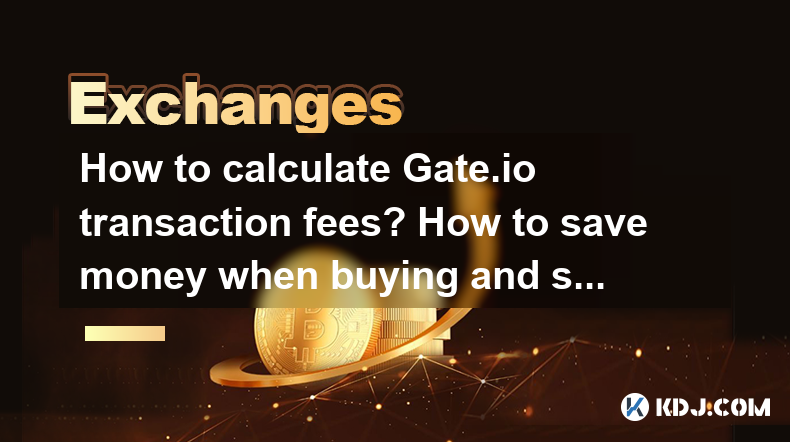
Gate.io is a popular cryptocurrency exchange that offers a wide range of trading pairs and services. Understanding how to calculate transaction fees on Gate.io is crucial for traders looking to maximize their profits. Additionally, knowing how to save money when buying and selling on the platform can significantly enhance your trading experience. This article will delve into the specifics of Gate.io transaction fees and provide strategies for minimizing costs.
Understanding Gate.io Transaction Fees
Gate.io employs a maker-taker fee model, which is common among many cryptocurrency exchanges. In this model, the fees are different for makers and takers. Makers are those who place orders that add liquidity to the order book, while takers are those who take liquidity by filling existing orders. The fee structure is designed to incentivize users to provide liquidity to the platform.
For spot trading, Gate.io's fee schedule is as follows:
- Maker Fee: 0.20%
- Taker Fee: 0.20%
However, these rates can be reduced based on your trading volume and holding of GateToken (GT), the native token of Gate.io. The more GT you hold and the higher your trading volume, the lower your fees will be. For example, if you hold a certain amount of GT and have a 30-day trading volume of over $1 million, your maker fee could be reduced to 0.10% and your taker fee to 0.15%.
Calculating Your Transaction Fees
To calculate your transaction fees on Gate.io, you need to consider both the type of order you are placing (maker or taker) and your eligibility for fee discounts. Here’s how you can do it:
- Determine the Order Type: If you place a limit order that does not immediately get filled, you are a maker. If you place a market order or a limit order that gets filled immediately, you are a taker.
- Check Your Fee Tier: Log into your Gate.io account and go to the fee section to see your current fee tier based on your GT holdings and trading volume.
- Calculate the Fee: Multiply the total trade amount by the applicable fee rate. For example, if you are a taker with a 0.20% fee and you are buying $1,000 worth of Bitcoin, your fee would be $1,000 * 0.0020 = $2.
Strategies to Save Money on Gate.io
Saving money on Gate.io involves understanding and leveraging the platform's fee structure and available discounts. Here are some effective strategies:
Hold GateToken (GT)
Holding GT is one of the most straightforward ways to reduce your trading fees. Gate.io offers significant discounts to users who hold GT in their accounts. The more GT you hold, the higher the discount you receive. For instance, holding 100 GT can reduce your maker fee to 0.18% and your taker fee to 0.19%.
Increase Your Trading Volume
Increasing your trading volume over a 30-day period can also lower your fees. Gate.io rewards high-volume traders with reduced fees. For example, if your 30-day trading volume exceeds $5 million, your maker fee could drop to 0.05% and your taker fee to 0.06%.
Use Limit Orders
Using limit orders instead of market orders can help you save money. Limit orders are more likely to be classified as maker orders, which typically have lower fees than taker orders. By setting a limit order, you add liquidity to the market, which can result in a lower fee.
Participate in Promotions and Airdrops
Gate.io frequently runs promotions and airdrops that can help you save money. These events often provide users with free tokens or reduced fees for a limited time. Keeping an eye on the platform's announcements and participating in these events can lead to significant savings.
Additional Tips for Saving Money
Beyond the strategies mentioned above, there are additional tips that can help you save money when trading on Gate.io:
Use the Referral Program
Gate.io's referral program allows you to earn a commission on the trading fees of users you refer to the platform. This can be a great way to offset your own trading costs. By referring friends and family, you can earn up to 40% of their trading fees as a commission.
Utilize Margin Trading Wisely
Margin trading can be a powerful tool for increasing your trading volume and potentially reducing your fees. However, it comes with higher risks. If used wisely, margin trading can help you achieve higher trading volumes, which in turn can lower your fees. Always ensure you understand the risks involved and use margin trading responsibly.
Keep an Eye on Withdrawal Fees
Withdrawal fees are another cost to consider when trading on Gate.io. These fees vary depending on the cryptocurrency you are withdrawing. To save money, try to consolidate your withdrawals to reduce the number of transactions and thus the total withdrawal fees.
Frequently Asked Questions
Q: Can I reduce my fees to zero on Gate.io?
A: While it is not possible to reduce your fees to zero, you can significantly lower them by holding GT, increasing your trading volume, and using maker orders. The lowest possible fees are available to users with the highest trading volumes and GT holdings.
Q: How often does Gate.io update its fee tiers?
A: Gate.io updates its fee tiers based on your 30-day trading volume and GT holdings. These updates are typically reflected in real-time, so you can see your current fee tier at any time in your account settings.
Q: Are there any hidden fees on Gate.io?
A: Gate.io is transparent about its fee structure, and there are no hidden fees. However, it's important to be aware of withdrawal fees, which can vary depending on the cryptocurrency and the network congestion at the time of withdrawal.
Q: Can I use GT to pay for transaction fees?
A: Yes, you can use GT to pay for transaction fees on Gate.io. This can be a convenient way to manage your fees, especially if you hold a significant amount of GT.
Disclaimer:info@kdj.com
The information provided is not trading advice. kdj.com does not assume any responsibility for any investments made based on the information provided in this article. Cryptocurrencies are highly volatile and it is highly recommended that you invest with caution after thorough research!
If you believe that the content used on this website infringes your copyright, please contact us immediately (info@kdj.com) and we will delete it promptly.
- Bitcoin's Pattern Break: Are HODLers the Key to the Next Surge?
- 2025-07-04 18:50:12
- Bitcoin Price, Trump's Bill, and the $150K Dream: A NYC Take
- 2025-07-04 19:50:12
- Ethereum, LILPEPE, and the July Bounce: Will Pepe Steal ETH's Thunder?
- 2025-07-04 19:10:12
- Binance Institutional Loans: Unlocking 4x Leverage and Zero Interest for Whales
- 2025-07-04 19:15:12
- Bitcoin Bull Run: Analysts Eye Peak in Late 2025?
- 2025-07-04 19:20:13
- Pepe Indicators, Bullish Forecast: Can the Meme Coin Rally?
- 2025-07-04 19:25:12
Related knowledge
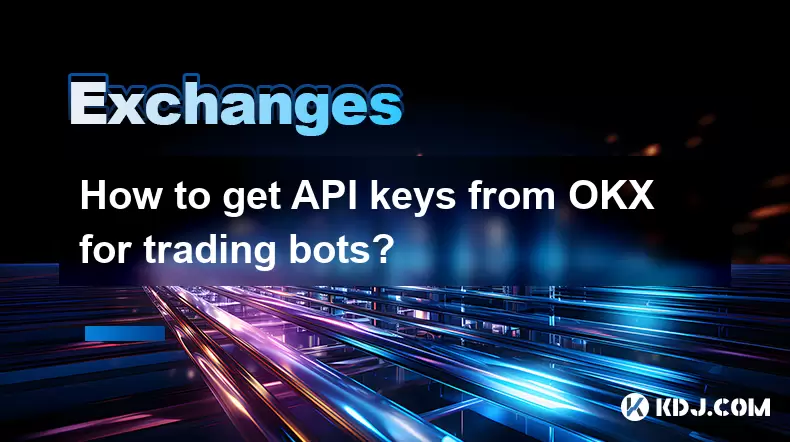
How to get API keys from OKX for trading bots?
Jul 03,2025 at 07:07am
Understanding API Keys on OKXTo interact with the OKX exchange programmatically, especially for building or running trading bots, you need to obtain an API key. An API (Application Programming Interface) key acts as a secure token that allows your bot to communicate with the exchange's servers. On OKX, these keys come with customizable permissions such ...
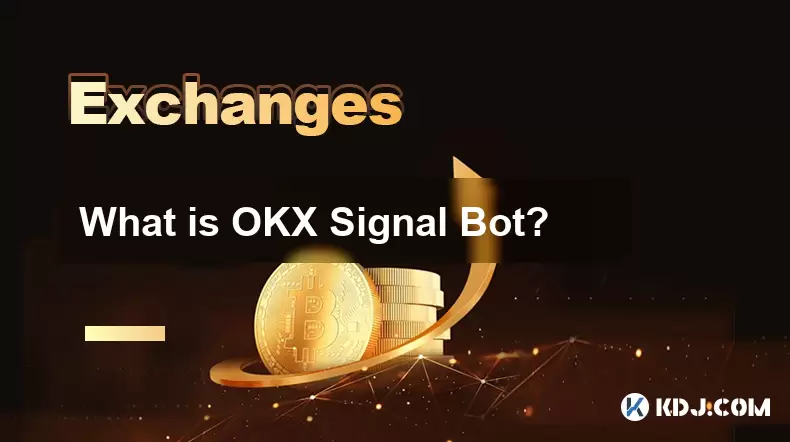
What is OKX Signal Bot?
Jul 02,2025 at 11:01pm
Understanding the Basics of OKX Signal BotThe OKX Signal Bot is a feature within the OKX ecosystem that provides users with automated trading signals and execution capabilities. Designed for both novice and experienced traders, this bot helps identify potential trading opportunities by analyzing market trends, technical indicators, and historical data. ...
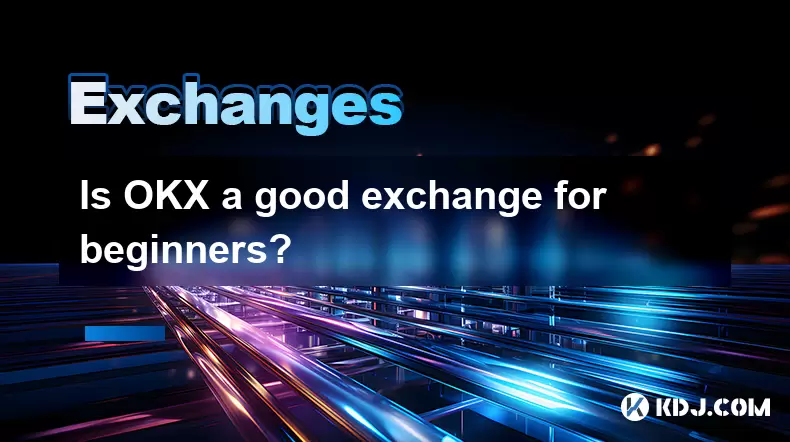
Is OKX a good exchange for beginners?
Jul 03,2025 at 05:00pm
What Is OKX and Why Is It Popular?OKX is one of the leading cryptocurrency exchanges globally, known for its robust trading infrastructure and a wide variety of digital assets available for trading. It supports over 300 cryptocurrencies, including major ones like Bitcoin (BTC), Ethereum (ETH), and Solana (SOL). The platform has gained popularity not onl...
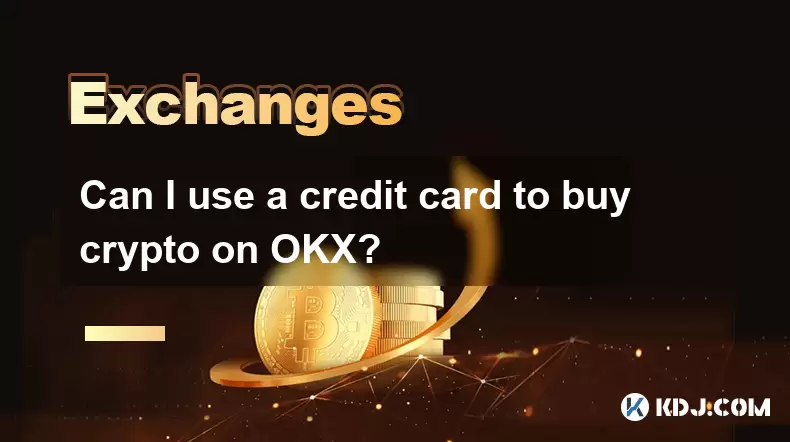
Can I use a credit card to buy crypto on OKX?
Jul 04,2025 at 04:28am
Understanding OKX and Credit Card PaymentsOKX is one of the leading cryptocurrency exchanges globally, offering a wide range of services including spot trading, derivatives, staking, and more. Users often wonder whether they can use a credit card to buy crypto on OKX, especially if they are new to the platform or looking for quick ways to enter the mark...
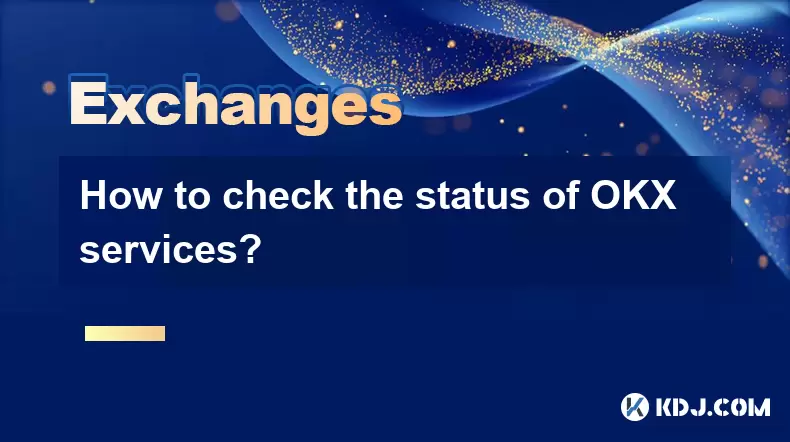
How to check the status of OKX services?
Jul 02,2025 at 11:14pm
What is OKX, and Why Checking Service Status Matters?OKX is one of the world’s leading cryptocurrency exchanges, offering services such as spot trading, futures trading, staking, and more. With millions of users relying on its platform for daily transactions, it's crucial to know how to check the status of OKX services. Downtime or maintenance can affec...
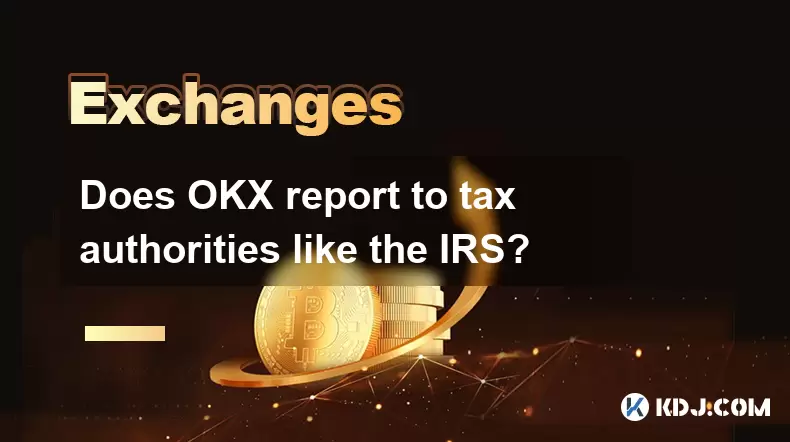
Does OKX report to tax authorities like the IRS?
Jul 03,2025 at 03:14pm
Understanding the Role of Cryptocurrency Exchanges in Tax ReportingCryptocurrency exchanges play a crucial role in facilitating digital asset transactions, but their responsibilities extend beyond trading and custody. As regulatory scrutiny intensifies globally, users are increasingly concerned about whether platforms like OKX report to tax authorities ...

How to get API keys from OKX for trading bots?
Jul 03,2025 at 07:07am
Understanding API Keys on OKXTo interact with the OKX exchange programmatically, especially for building or running trading bots, you need to obtain an API key. An API (Application Programming Interface) key acts as a secure token that allows your bot to communicate with the exchange's servers. On OKX, these keys come with customizable permissions such ...

What is OKX Signal Bot?
Jul 02,2025 at 11:01pm
Understanding the Basics of OKX Signal BotThe OKX Signal Bot is a feature within the OKX ecosystem that provides users with automated trading signals and execution capabilities. Designed for both novice and experienced traders, this bot helps identify potential trading opportunities by analyzing market trends, technical indicators, and historical data. ...

Is OKX a good exchange for beginners?
Jul 03,2025 at 05:00pm
What Is OKX and Why Is It Popular?OKX is one of the leading cryptocurrency exchanges globally, known for its robust trading infrastructure and a wide variety of digital assets available for trading. It supports over 300 cryptocurrencies, including major ones like Bitcoin (BTC), Ethereum (ETH), and Solana (SOL). The platform has gained popularity not onl...

Can I use a credit card to buy crypto on OKX?
Jul 04,2025 at 04:28am
Understanding OKX and Credit Card PaymentsOKX is one of the leading cryptocurrency exchanges globally, offering a wide range of services including spot trading, derivatives, staking, and more. Users often wonder whether they can use a credit card to buy crypto on OKX, especially if they are new to the platform or looking for quick ways to enter the mark...

How to check the status of OKX services?
Jul 02,2025 at 11:14pm
What is OKX, and Why Checking Service Status Matters?OKX is one of the world’s leading cryptocurrency exchanges, offering services such as spot trading, futures trading, staking, and more. With millions of users relying on its platform for daily transactions, it's crucial to know how to check the status of OKX services. Downtime or maintenance can affec...

Does OKX report to tax authorities like the IRS?
Jul 03,2025 at 03:14pm
Understanding the Role of Cryptocurrency Exchanges in Tax ReportingCryptocurrency exchanges play a crucial role in facilitating digital asset transactions, but their responsibilities extend beyond trading and custody. As regulatory scrutiny intensifies globally, users are increasingly concerned about whether platforms like OKX report to tax authorities ...
See all articles

























































































